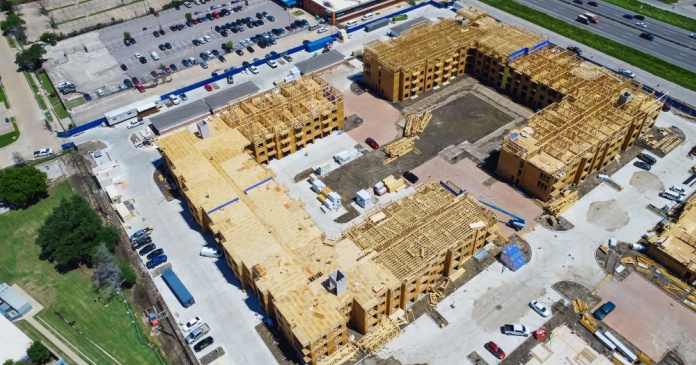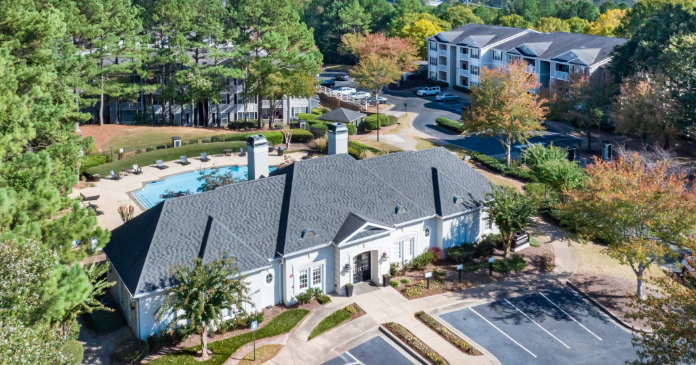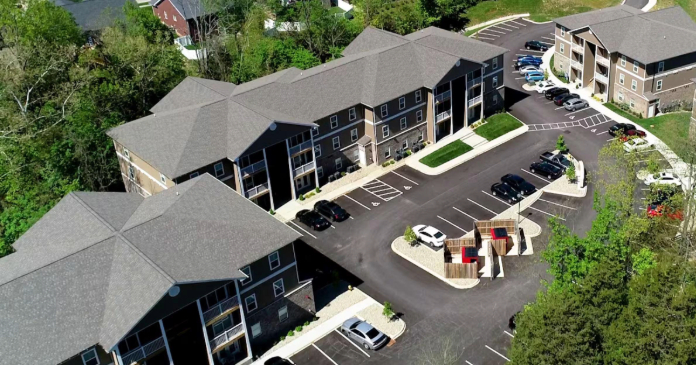“That’s because in the last four months the market has taken a 180 and there’s a ton of capital and deals are starting to happen, so we are all back to being mortgage brokers again,” Mozer, co-founder and principal manager director of George Smith Partners, said in mid-March.
Mozer’s firm still has an active advisory platform that has joined forces with several law firms to help apartment community owners, who are underwater on their loans, work successfully with master and special servicers, banks and life insurance companies. But there is enough money available from a variety of sources to entice brokers back into the financing stream.
Signs of life
Despite continued weak demand and falling values of assets, early 2010 saw thawing in the capital markets—hopeful signs that as banks continue to write off their losses on distressed assets, more capital will be deployed.
Fannie Mae and Freddie Mac last year were responsible for 80 percent of all multifamily loans and helped to keep many multifamily owners out of default. They still are the lenders of choice with loans of up to 80 percent LTV, but typically 75 percent, with debt coverage ratios over 1.25x.
“Because they are being subsidized by the U.S. government, the GSEs’ money is cheaper than anywhere else for mixed-rate mortgages, but the disadvantage is that you don’t get the same level of leverage you might get with another lender,” said Mozer.
Back in the game
The good news is the GSEs now are not the only game in town. Other lenders are entering the market with double or triple their allocations for new product.
For now, they are restricted to stabilized properties in strong markets, and the few deals that are hitting the market are seeing fierce competition for financing. This competition has seen debt yields on some loans slide to 10 percent, according to the Jones Lang LaSalle’s Lenders’ Expectations Report 2010, a survey of major financial institutions on the outlook for commercial property lending conducted during the Mortgage Bankers Association Convention & Expo held earlier this year in Las Vegas.
“We are seeing interest rates come in because of the competition to finance those Class A properties and it remains to be seen if it will lead to more flexible rates or consideration of properties in secondary or tertiary markets,” said Clay Sublet, vice president of Key Bank.
Life companies are leading the charge and sending a clear message that, given corporate compressed credit spreads compared to a year ago, they will be lending this year en masse, noted the Jones Lang LaSalle report.
They are offering 10-year fixed-rate loans in the 5.75 to 6.50 percent range with LTVs from 65 to 70 percent, while targeting the strongest sponsors on the best performing properties and continue to dedicate a portion of their production capacity towards refinancing loans in their current portfolios.
More green shoots
Banks also are back and very competitive, if you are willing to do a five-year term or less, said Mozer. But underwriting is still very conservative and LTVs have been dialed back to 1990s levels of 70 and sometimes 75 percent. Their hold limits are around $45 million to $50 million for well-stabilized assets. “Rental rates and occupancies will be knocked down or underwritten at the lesser of in-place or market, to make sure there is not erosion in the income stream of the properties as they finance them,” said Sublet.
But banks revealed during the MBA convention that credit standards are easing for commercial real estate loans and one lender suggested that the net percentage of domestic banks reporting tightening standards for commercial real estate loans (including construction and development loans) was 27 percent, down from a high of more than 80 percent in late 2008.
Meanwhile, securitized lending returned last year with the issuance of $1.6 billion in Commercial Mortgage-Backed Securities, limited to single-borrower deals. But extreme over-subscription has led to an interest in multiple borrower pools, according to Jones Lang LaSalle.
Most of the 60 lenders that participated in Jones Lang LaSalle’s annual 2010 Lenders’ Production Expectations Survey anticipate a modest level of CMBS investment this year.
Forty-eight survey respondents said they expect CMBS issuance of less than $10 billion in 2010, 27 percent predict $10 billion to $20 billion and 21 percent forecast $20 billion to $30 billion. In 2011, 38 percent expect CMBS issuance of $20 billion to $30 billion.
Several banks and Wall Street firms like Citicorp, RBS, Wells Fargo, JP Morgan Chase, B of A, Goldman Sachs and Deutsche Bank are considering soliciting loans for potential securitization.
Lenders that are starting programs to offer five- and 10-year securitized loans are keeping a lid on debt levels and debt service coverage and, like the life companies, are focused only on the best sponsors, strong markets and quality assets. They will consider assets, sponsors and markets one step down from life company standards.
“CMBS will compete on dollars but can’t compete on rate. While Fannie Mae circles a market like Phoenix or Vegas, CMBS may be willing to go with a lesser property, market or sponsor. There will be a higher rate, but a few more dollars,” said Mozer.
Filling the gap
Even the mezzanine market is picking up steam and the newly capitalized mortgage REITs and private equity players, which have limited, if any, regulatory constraints, are stepping in to fill the leverage gap caused by tighter lending standards.
Mezzanine financiers are taking on more risk and still offering full-term, interest-only and non-recourse loans for speculative real estate at attractive risk-adjusted interest rates, according to Jones Lang LaSalle.
Freddie Mac announced the launch of a program this spring designed to help apartment owners refinance overleveraged properties and could allow mezzanine lenders to acquire B-pieces from new Freddie Mac commercial mortgage-backed securities deals. The GSE said it would partner with mezzanine lenders, who would loan on multifamily mortgages originated by the GSE and destined for securitization, with the agency originating lower-level senior mortgages and the mezzanine lenders providing additional leverage up to 85 percent.
“The main reason for this program is that you can’t refinance an old paradigm deal with new paradigm capital because, when underwriting standards were a lot more lax, cap rates were lower. There were a lot more proceeds available for an old paradigm deal, and, when these deals mature, you’re not able to refinance with a Fannie or Freddie loan. If you want to take advantage of the GSEs, you have to lever it up with a mezzanine loan, which is what these new players are doing. In the past, you couldn’t put mezzanine financing on because Fannie and Freddie wouldn’t allow it. So the only way you could really do it was with preferred equity.
“Now the GSEs are saying, ‘To be more competitive, we need to get our proceeds up,’ but they don’t want to keep that risk on their book. They are saying, ‘Let someone else take that risk, but I want that other person taking the risk to be someone we trust, that we know; someone we would lend money to if they had to step into the borrower’s shoes.
“The people we are talking with have longstanding relationships with Fannie and Freddie. It’s not just some guy named Joe who has mezzanine money. It has to be approved by Fannie and Freddie and there’s a certain way you have to do business with them,” said Mozer.
Construction capital
Apartment companies are slowly gearing up to build new product and Mozer’s firm is beginning to close a few loans for multifamily development, mostly through the HUD 221 (d) (4) program.
“The problems with that program are that you have to pay prevailing wage, which makes the project more expensive than if you could use non-prevailing wage. Second, it’s a slow arduous process, but if you have the stomach for it, it’s great money. It’s 40-year fully amortizing loan, flexible pre-payment with minimum penalty and high-leverage non-recourse. It’s a great product for ground-up and we are doing them with the right signature. We are also doing recourse, uncovered construction loans from a bank without a takeout,” said Mozer.
Unfortunately, the FHA is proposing changes in the next month to the 221 (d)(4) program that would increase debt service coverage ratios—currently at 1.11x—to a minimum 1.20x for market-rate deals and a minimum 1.15x for affordable housing projects. Developers also would be required to put up more working capital and have a greater operating deficit reserve, if the housing authority’s changes are implemented.
The trouble with choice
With capital available from a variety of sources, there is a huge differential in product, pricing and proceeds, according to Mozer.
“The market is very inefficient. If you talk to five different lenders you’ll get seven different answers,” said Mozer. He recently received quotes from four CMBS guys on the same property that varied by three-quarters of a percentage point and ten percent in proceeds. “The market is moving very fast and there isn’t a steady state. Some lenders price aggressively. Others set prices for fat yields, so if the market goes bad, they get paid for their risk,” he said.
“Debt has returned to cash-flowing assets and now we are seeing a comeback on the transitional assets. Debt is coming back on construction of assets and mezzanine is coming back and so is equity. So there is plenty of money out there for multifamily, and, while this is a positive trend, you have to say, ‘What’s my marginal cost, what’s my marginal benefit of not paying a GSE?’ and usually the question isn’t, ‘How much is my marginal cost?’ It’s ‘How badly do I need these incremental dollars?'” said Mozer.
“Today it’s back to the basics of blocking and tackling. We are really seeing two kinds of players, those who have a track record of effectively operating a property and the financial engineers who can make the numbers work, but don’t really know how to run a property. The guys who have a track record are the ones the lenders are going to go with,” he said.














